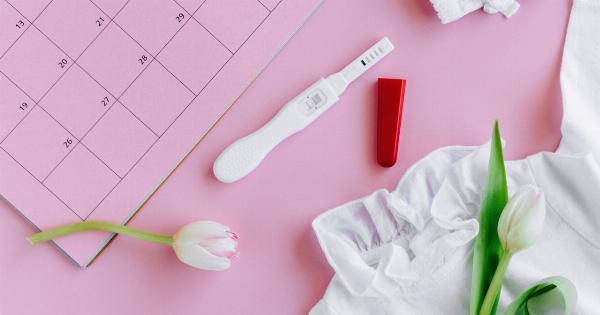Understanding your fertile days is one of the most important things you can do if you are trying to conceive. The fertile window is the time during each menstrual cycle when pregnancy is most likely to occur.
This article will explore everything you need to know about your fertile days, including what they are, when they occur, and how to track them.
What are Fertile Days?
Fertile days are the days in a woman’s menstrual cycle when she is most likely to get pregnant. This window of time is considered fertile because it is during this period that the ovaries release an egg, known as ovulation.
If sperm is present in the reproductive system during this time, it may fertilize the egg, leading to pregnancy.
When Do Fertile Days Occur?
Fertile days generally occur around ovulation, which typically happens around 14 days after the start of a woman’s menstrual cycle.
However, not all women have a 28-day menstrual cycle, and the timing of ovulation can vary depending on many factors, including stress, exercise, and illness. It is important to track your menstrual cycle and ovulation patterns to determine your unique fertile window.
How Can You Track Your Fertile Days?
There are several methods you can use to track your fertile days:.
1. Calendar Method
The calendar method involves tracking the length of your menstrual cycle and estimating the day of ovulation. You can use this method by counting the days from the first day of your period to the day before your next period begins.
Once you have tracked your cycles for several months, you can estimate when ovulation may occur and identify your fertile window.
2. Basal Body Temperature (BBT) Method
The BBT method involves tracking your body temperature each morning before getting out of bed. Your temperature will rise slightly after ovulation, providing an indication of when you are fertile.
This method requires consistent tracking over several months to establish a pattern.
3. Ovulation Predictor Kits (OPKs)
OPKs are available over the counter and can help determine when ovulation is occurring. These kits detect surges in luteinizing hormone (LH), which triggers ovulation.
When used correctly, OPKs can accurately predict ovulation and identify your fertile window.
4. Cervical Mucus Method
Changes in cervical mucus can indicate ovulation. During the fertile window, cervical mucus becomes thin and slippery, resembling egg whites. This method requires close observation of cervical mucus changes throughout the menstrual cycle.
What Factors Affect Your Fertile Days?
Several factors can affect the timing and duration of your fertile days, including:.
1. Age
As women age, fertility naturally declines. The likelihood of getting pregnant decreases after the age of 35.
2. Health Conditions
Certain health conditions can affect fertility, including polycystic ovary syndrome (PCOS) and endometriosis.
3. Medications
Some medications, such as antidepressants and anti-inflammatory drugs, can affect ovulation and fertility.
4. Lifestyle Factors
Factors such as smoking, alcohol consumption, and stress can affect fertility and the timing of ovulation.
How Can You Improve Your Chances of Conceiving?
If you are trying to conceive, there are several things you can do to improve your chances:.
1. Maintain a Healthy Lifestyle
Eating a balanced diet, getting regular exercise, and avoiding smoking and alcohol can all improve fertility and increase the likelihood of conception.
2. Track Your Fertile Days
Use one or more of the methods outlined above to track your fertile days and increase your chances of getting pregnant.
3. Have Regular Sex
Having regular sex throughout your menstrual cycle can increase the odds of conceiving. Aim to have sex every other day during your fertile window.
4. Seek Medical Advice
If you have been trying to conceive for several months without success, consider seeking medical advice. Your doctor can help identify any underlying issues and recommend treatments to improve fertility.
Conclusion
Understanding your fertile days is crucial if you are trying to conceive. By tracking your menstrual cycle and using one or more of the methods outlined above, you can identify your fertile window and increase your chances of getting pregnant.
Remember to maintain a healthy lifestyle and seek medical help if needed.






























